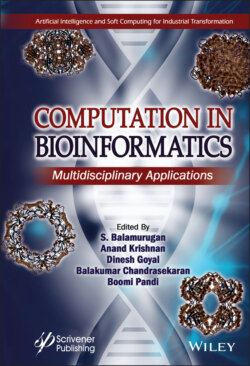Читать книгу Computation in BioInformatics - Группа авторов - Страница 48
2.7 Concluding Remarks and Future Prospects
ОглавлениеChemical probes generated through academic programs can provide valuable information on target biology and translatability. The NIH Molecular Libraries Program contributed significantly toward probe discovery and developed 375 probes against a large number of targets. The academic drug discovery consortium (ADCC) lists 149 drug discovery centers across the world. While some of the screening centers focus on specific diseases or capabilities, a vast majority of the screening facilities works on a wide range of targets and diseases. The screening centers differ in the size of screening resources (compound collections, advanced equipments, and platform detection technologies and capabilities) as well as extent of a university’s drug discovery infrastructure support. The extent to which an academic discovery project is taken along the course of mid- to late-stage discovery depends largely on resources and an interest in establishing multidisciplinary collaborations. Obtaining funds for medicinal chemistry optimization, ADME, pharmacokinetics and pharmacodynamics, formulations, and toxicology are bottlenecks for majority of the academic programs. The most profitable molecule emerges in the academia if the identified molecule move forward for the late stage drug development at the industry. Around 24% of FDA-endorsed drug discovery programs somewhere in the range of 1998 and 2007 were accounted for to have risen up logically creative college licenses to biotechnology and pharmaceutical organizations. Academic drug discovery programs are not limited to scholarly research but have additionally acquired advanced analytical methodologies into conventional medication revelation forms. Substantial change in the experiment design and computational methodologies with the use of advanced instrumentation leads to major change in academic as well as industrial drug discovery program. Exploiting computational strategies, strong hits can be acquired in only weeks. Looking for new concoction elements has prompted the development of top-notch datasets and libraries that can be streamlined for either sub-atomic assorted variety or likeness with available candidates. What is more, disseminated processing has gotten progressively famous in enormous scale virtual screening, partially on account of progressively ground-breaking innovation.
Although it is apparent that computational drug discovery methods have great potential, one should not rely on computational techniques in a black box manner and should beware of the Garbage In–Garbage Out (GIGO) phenomenon. The in silico segments genererally inquire about virtual screening of the potential candidates followed by use of high-throughput instruments to check the few potential candidates for pharmacological effect however this process is not the substitute for the potential in vivo evaluation. Later on, notwithstanding expanding the precision and adequacy of existing advances, the most significant inclination in computational medication disclosure field will be the incorporation of computational science and science together with chemoinformatics and bioinformatics, which will bring about another field known as pharmacoinformatics. Motivated by the fulfillment of the human genome and various pathogen genomes, incredible endeavors will be made to comprehend the job of quality items so as to misuse their capacities, which could be of extraordinary assistance for finding new medication targets. Computational strategies including objective distinguishing proof will turn out to be more enticing, and planned little atoms will likewise be widely utilized as tests for useful research.
